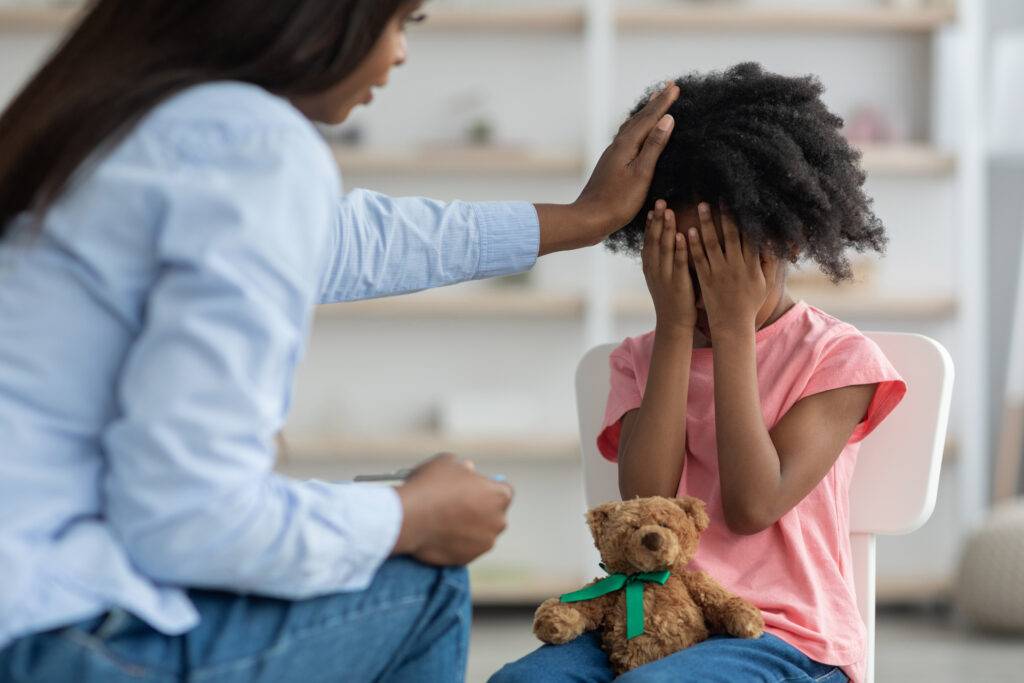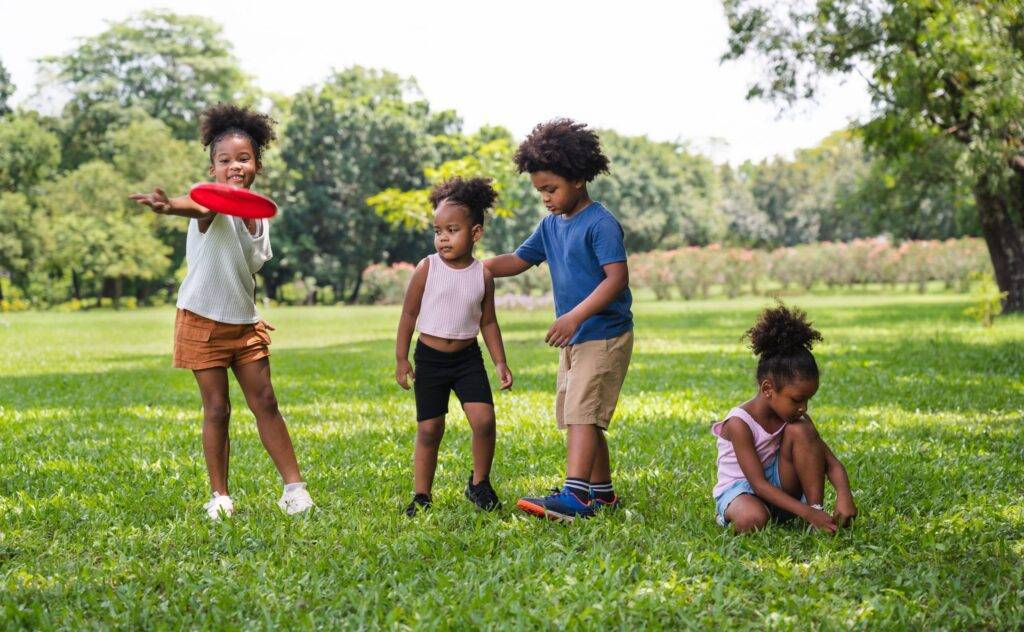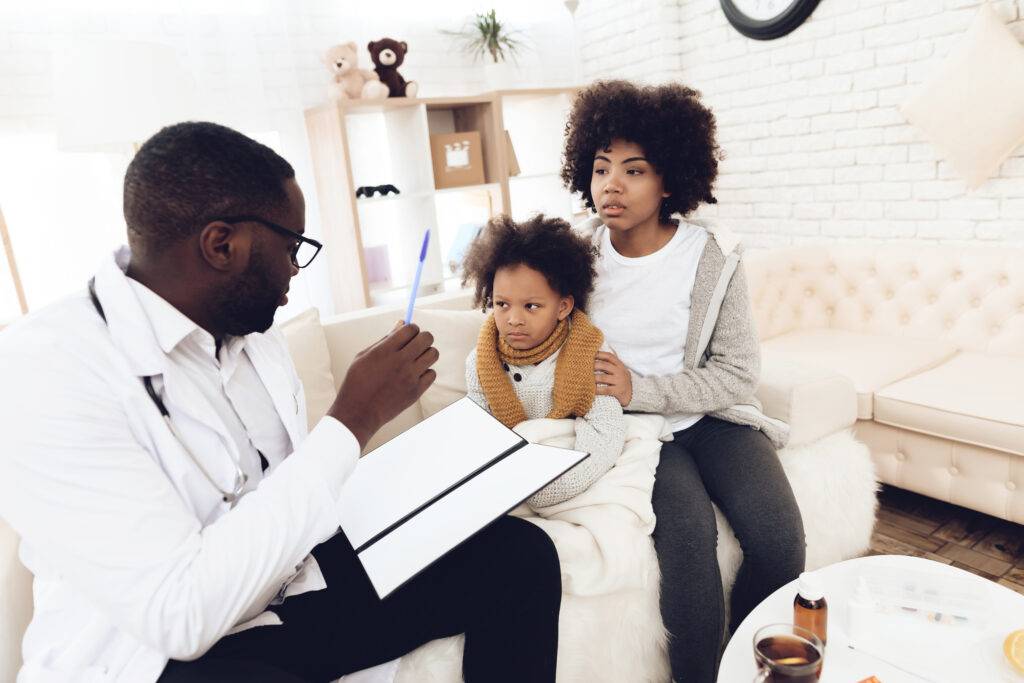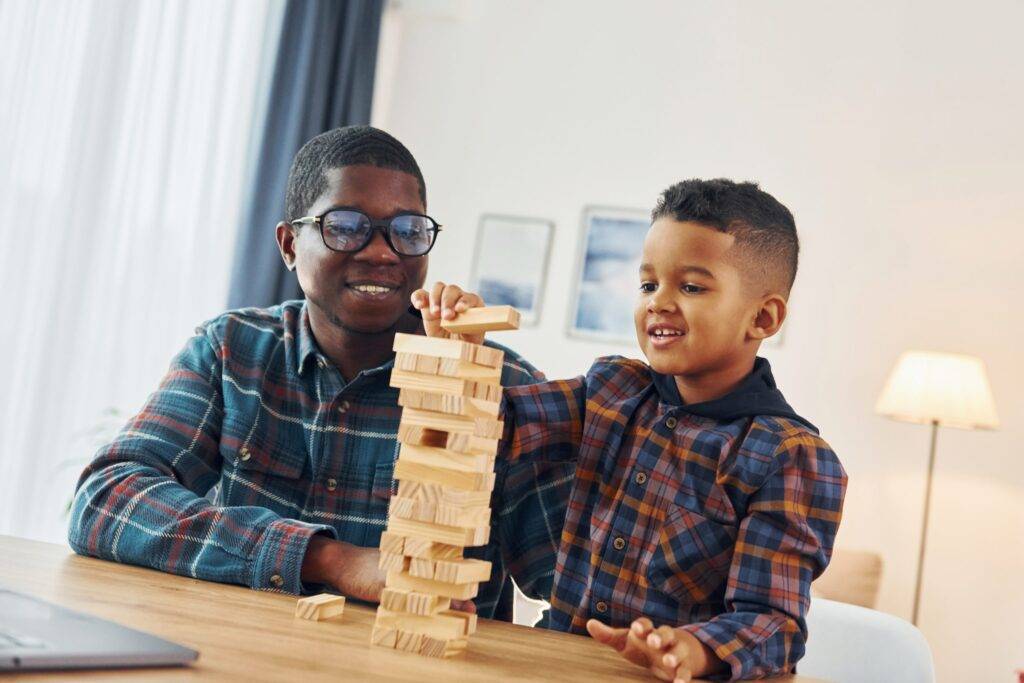Download The App
PTSD in children develops when a traumatic event or experience overwhelms their emotional capacity to handle stress or trauma. This article details what PTSD is, how children experience it, and how you can help a child with PTSD.
What is PTSD?
Post-traumatic Stress Disorder (PTSD) is a mental health disorder triggered by experiencing or witnessing a traumatic event. e.g., sexual assault, bullying, a car accident, a natural disaster, war, losing a loved one, et cetera.
Children experience trauma very differently from adults, so PTSD in children differs from PTSD in adults.
Also, PTSD in children is rarer than PTSD in adults. This is because most children and teens who go through trauma recover quickly and grow out of it because of their brain development and psychology.
But when a child finds it difficult to move past a traumatizing or extremely stressful event, they may have post-traumatic stress disorder. Such a child will display several long-term symptoms that interfere with their daily activities and relationships.
PTSD in children often becomes chronic and may lead to other mental health issues such as depression or anxiety.

Causes of PTSD in Children
Any event causing severe stress and shock in children can cause them to develop PTSD. For instance: something a child experienced, witnessed, or something that happened to their loved ones.
Traumatizing events that can cause PTSD in children include:
- Serious accidents such as car crashes or train wrecks.
- Natural disasters such as floods, hurricanes, and earthquakes.
- Severe medical issues leading to invasive procedures and spending a lot of time at the hospital.
- Bombings and shootings.
- Getting kidnapped.
- Witnessing the death of a loved one.
- Sexual assault or rape.
- Bullying and emotional abuse.
- Animal attacks.
- Physical assault or abuse.
- Neglect.
Risk Factors of PTSD In Children
There are many factors other than a traumatic event itself that can affect the intensity of PTSD, like:
- How bad the event was.
- How long it lasted.
- The frequency of the event — if it happened more than once.
- The emotional capacity and resilience of the child, even before the event.
- How supportive the child’s family and community are.
How Do Children Experience PTSD?
Children experience PTSD almost in the same way as adults do. They experience most of the same symptoms that present themselves in adults, such as:
- Problems sleeping
- Difficulty with concentration
- Feeling nervous and fidgeting
- Intense feelings of shame and guilt
- Becoming aggressive and violent
- Avoiding people, places, things, and situations that bring back memories of the traumatic event
- Flashbacks and nightmares
- Feeling numb and having problems expressing positive emotions or affection
- Not enjoying activities they used to love (anhedonia).
Some of these symptoms may not appear in younger children (ages 3-10). Instead, they may become more fearful and display regressive behaviors (behaviors they’ve outgrown) or behavior that belongs to a previous stage of development.
These may include bed-wetting, thumb-sucking, or becoming mute (refusing to talk). Some children may act out the traumatic experience through play, lasting for hours or even days.
How is PTSD Diagnosed in Children?
A child psychiatrist or psychologist can diagnose a child with PTSD after a thorough mental health evaluation.
Diagnosing PTSD in children is trickier than diagnosing it in adults; because each child experiences trauma differently, presents different symptoms, and possesses a different ability and tolerance to cope after the trauma.
Acute stress reaction may also be confused with PTSD in children. In acute stress reaction, the symptoms of PTSD show up in the first days and weeks after the traumatic event.
Acute stress reaction is a normal and expected reaction to trauma, but it only lasts for a short while. PTSD in children can only be diagnosed when the symptoms last for more than a month and interfere significantly with the child’s life.
How to Help a Child with PTSD
PTSD in children develops when a traumatic event or experience overwhelms their emotional capacity to handle stress or trauma. Hence, they’ll need extra help to get through the coping process and begin to heal.
This extra help can come in three different ways:
- Treatment from mental health experts.
- Love and support from parents, caregivers, teachers, and the community.
- Knowing what to say and NEVER say to a child with PTSD.
Treatment from mental health experts
Treatment for PTSD in children includes therapy and medication.
Therapy for children with PTSD is known as trauma-focused Cognitive Behavioural Therapy. CBT is a special type of talk therapy that uses discussions and learning activities to help children cope with emotions.
A parent or caregiver should be present during therapy because they provide emotional support and comfort, helping the child feel safer and interested in the therapy.
Teens with PTSD go through therapy similar to methods used to treat PTSD in adults. These methods often include:
- Cognitive behavioral therapy, which helps them process their feelings and thoughts about the trauma.
- Prolonged exposure activities help teens manage their anxiety and learn to face the things they avoid due to trauma.
- One-on-one psychotherapy, where they’re encouraged to talk about their trauma and adjust their thoughts about it.
Medication like antidepressants helps children and teens cope with other symptoms of PTSD, such as anxiety, depression, and sleep issues.
Love and support from loved ones
Parents, caregivers, teachers, and everyone around a child with PTSD have a vital part to play in helping the child through their trauma.
As a parent, how can you help your child deal with PTSD?
- Help your child feel safe with hugs and breathing exercises.
- Spend quality time together doing things they love.
- Reassure them constantly that they’re not alone.
- Show up for your child’s therapy and give them emotional support.
- Let your child’s teachers and other caregivers know about their traumatic experience.
- Avoid yelling or lashing out at your child when they do something wrong.
- Be patient when they make mistakes.
As a teacher or caregiver, here’s how you can help a child with PTSD:
- Reassure them that they’re not alone.
- Give them time to adjust.
- Allow extra time to complete homework and other tasks.
- Avoid tiptoeing around the trauma and pretending it never happened.
Things to NEVER Say to a Child With PTSD
For children with PTSD, statements that invalidate their feelings and experiences can cause them to withdraw and internalize their feelings. They can also trigger flashbacks, anxiety attacks, and recurring feelings of guilt.
Here are some things to NEVER say to a child with PTSD:
- It wasn’t that bad; get over it.
- You’re just an attention-seeker.
- Stop being a crybaby.
- People die all the time, and people get over it.
- I’m tired of this; I can’t deal with this right now.
- You’re not trying hard enough (with school, therapy, or any task)
- Other people have had it worse.
- You’re not the first to experience ___.
Dealing with a child experiencing PTSD can be tedious and frustrating, but understand that PTSD is not a walk in the park, even for adults. It might get hard to cope, but with a lot of patience, you can get through the difficult times.
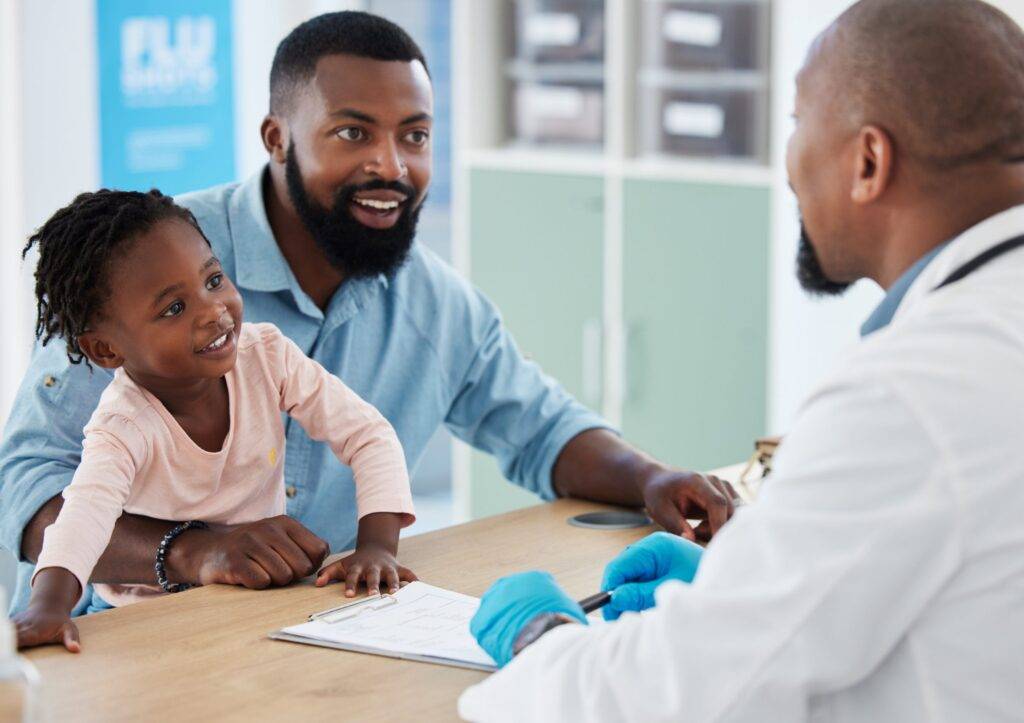
Key Takeaway
Children are resilient and often shake off a traumatic event and move on. But when they don’t and begin to show symptoms of PTSD, it’s time to get them a thorough mental health evaluation carried out by a mental health expert and begin the treatment process.
It’s a long road to recovery, but with a lot of love and patience, children can and often get through PTSD.
Reach out to us for any questions that you have about PTSD in children and any other concerns or questions you have about your mental health.
mental health
